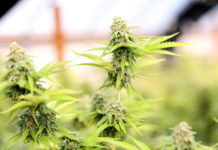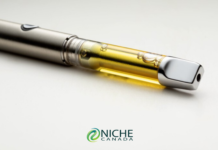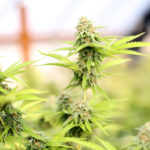Recent news that British Columbia is reporting some of the lowest cannabis sales in Canada may have surprised some, seeing as the province is known for its renowned “B.C. bud.”
According to recently released Statistics Canada data, B.C. has sold just $19.5 million of recreational cannabis. Only the small province of PEI has sold less, with $10.7 million in sales.
David Hurford, who is behind the B.C. Small Cannabis Producer and Processor Co-op, said he was not among those who were surprised by the low sales figures, due to a number of factors including the small number of storefronts in the province, product shortages, and also because there is a “very sophisticated consumer in B.C.” that is accustomed to premium product.
Product that he says is not anywhere close to being on the shelves in legal shops.
“The B.C. government stores are only carrying the cannabis from licensed producers approved by Health Canada,” he said, noting that there’s only been one craft producer approved by the federal government in the entire country.
“So the consumers, who are quite sophisticated in B.C., know the product that they have been enjoying, it’s not in those stores. It doesn’t exist, it’s not close to being there, and they’re going to their local dispensary – some of which are still open, although many of them are now being closed by the province. Then of course there’s online opportunities as well, people have shown that they can be innovative when it comes to finding the product they want and right now the government stores are not offering the product that the vast majority of cannabis consumers in B.C. want, and have been enjoying for decades. That’s the product that’s grown by their local, small growers.
“It’s in everybody’s interest to get the small growers into the game.”
Hurford said it’s “glaring” that there’s only one craft producer approved in Canada at this point.
“It’s ridiculous. But what we’ve heard, from leadership at all levels of government, I think there’s an understanding that this is one of those areas that they didn’t get right. They made it worse in May when Health Canada actually changed the rules to restrict the number of producers that can come into the game at a time when they’re experiencing shortages – and not just a shortage of product, but a shortage of quality product. They’re selling stuff that’s only a year old now. They’re desperate for product.”
Hurford said Grow Tech Labs, a Vancouver-based cannabis accelerator, has done a good job of shining light on the issue.
An analysis by Grow Tech Labs earlier this year highlighted the economic toll the issue takes, concluding that licensing only 15 per cent of B.C.’s 6,000 craft growers could legitimize nearly $3 billion in sales in just two years.
At the time, Grow Tech Labs founder Barinder Rasode said the province is squandering its cannabis culture capital.
“It really saddens me at a personal level to see Alberta and Ontario becoming cannabis capitals of the world and B.C. is getting so far behind,” she said.
The BCSCPP has also released an advocacy document, calling on the government to make “significant” changes to regulations, arguing that without them the province’s craft cannabis industry won’t survive.
Hurford told BotaniQ Magazine that a small grower co-op can change things for the better for the government, the growers and of course, the consumer.
“To me, we’re either going to bring these people into the system, or the system’s going to make criminals out of them,” he said. “I don’t think that’s where we want to land. This whole effort is about taking that element out. Obviously if there’s organized crime connections we want to get to the bottom of that. No one wants to be supporting that. Certainly, the producers as we travelled around BC, and we met with hundreds of them over the past few months, they all want to get away from that.
“They all want to be legitimate, they want to be proud of what they do, they want to be proud of being job creators in their community, they want to make an honest living for their families, put their kids through college, all the same things everyone else wants. I think we will get there. If we’re still having this conversation a year from now, then the policy will have been a complete failure,” he added.
The barriers facing small growers are significant, Hurford explained.
“It’s all the problems that small to medium sized businesses face in general. But you can times it by two because of the stigma of cannabis,” he said. “It’s tough for small and medium sized businesses to get going anyway, I think the failure rates are quite high. So in that sense it’s always tough. It’s tougher if you’re a woman. It’s tougher if you’re Indigenous as well. I think those barriers are still there in cannabis. The challenges and barriers here are first of all very complicated regulatory processes, and a system of application that is certainly not in touch with the people they’re trying to reach. It’s cumbersome, it’s daunting, and it appears to be built to fail. Of course, that’s what’s happening. We’ve only had a few hundred apply, and one approved. So it appears to be built to fail.”
Hurford said there are 25,000 small, legal medical cannabis growers across the country. It would make a huge difference in supply – and quality – if even a fraction of those contributed to the legal recreational side, according to Hurford.
“There has been no effort to say, ‘Boy, you’re pretty good at growing cannabis, you’ve been doing it for decades, you’re growing weed for very sick people who are vulnerable, and they’re not dying, they’re doing well, in fact they’re renewing their prescription every year.’ No one has said, hey, do you want to grow in the legal market? Not even that.”
Caps for small producers is another massive hindrance, he added.
“The caps, they’re only allowed to grow 2,100 square feet which is half the neutral zone of a hockey rink, a very small space. So when you go out and try to raise money for capital, for financing, your profitability is restricted. They don’t put caps on the big producers. They can keep growing and growing and growing, up to hundreds of thousands of square feet. But they’ve put a cap and said you can only make so much money… If you go to the bank and try to get a loan on a business plan, they’re going to laugh you out of the park because there’s no way you can make money doing that. Similarly, you have processors that are capped at 630 kilograms a year, so we think those limits should be double. That would improve their profitability and allow them a lot more room in a business plan.”
Hurford hopes to see 15 per cent of those small growers transition.
“That would be 900 growers, just in B.C.,” he said. “And that’s a conservative estimate. We’ve said ‘Set a target, create a task force in the government and with the sector to reach that target, make improvements to the process, report regularly on how you’re doing and adjust the rules, the caps.’ As soon as you do that, capital’s going to come. If I’m an investor and I say, OK, the government wants 2,500 small growers across canada in two years. They’ve raised the caps now to 4,100 square feet of growing space, that’s going to double my profit. Now I’m ready to invest. Now I’m ready to look at this as a viable operation.
“Of course now we’re seeing a lot of the small producers get together in growing areas and municipalities are now starting to designate spaces, acres and acres of spaces on the outskirts of town where these small producers can go and grow,” he added. “So all of the sudden we start to see these critical masses emerge. If we had 900 growers growing in B.C., we’d have the largest producer of cannabis in the world. We would completely flip it upside down, from the small producer being disadvantaged, to the collective having an incurable amount of political clout, purchasing power, and their ability to negotiate price has gone up dramatically. And this is a premium product.”
The co-op, he added, can be a great place for government to liaise with that side of the industry.
“I think the government, certainly at the political level wants to these small growers in. I think the B.C. government bureaucracy is understanding now as well, because they’re keen to purchase.
“They know people aren’t coming in the stores because product isn’t there, and it’s the government’s own stores. They need people coming into stores, too, so I think they’re quite keen but they don’t know who to deal with. The growers, by nature, are very underground and scattered and diverse. They’ve had to be that way to survive. Now, to survive, they actually have to do the opposite. They have to come out, collaborate, co-ordinate, share their identity and be proud of what they do in public. It’s a huge step for them. In the past, survival depended on secrecy – now survival depends on coming out and complying. The challenge is the government is not even meeting them half way.”
READ ALSO: Cultural growing pains: Why we lose when craft cannabis growers aren’t part of the legal landscape



















